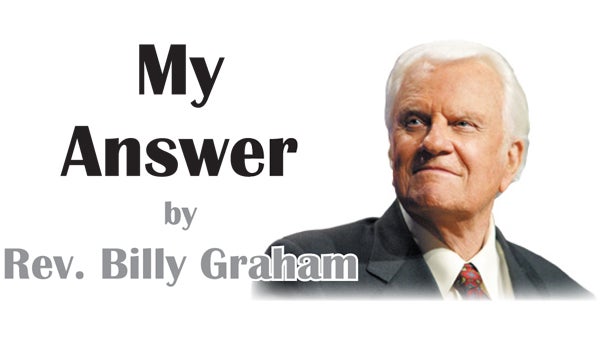Eight years of nuclear terror … and it continues
Published 10:43 am Tuesday, August 5, 2025
|
Getting your Trinity Audio player ready...
|
By Lawrence S. Wittner
Ever since the atomic bombings of Japanese cities in August 1945, the world has been living on borrowed time.
The indications, then and since, that the development of nuclear weapons did not bode well for human survival were clear enough. The two small atomic bombs dropped on the cities of Hiroshima and Nagasaki killed between 110,000 and 210,000 people and wounded many others, almost all of them civilians. In subsequent years, hundreds of thousands more people around the world lost their lives thanks to the radioactive fallout from nuclear weapons testing, while substantial numbers also died from the mining of uranium for the building of nuclear weapons.
Trending
Most startlingly, the construction of nuclear weapons armadas against the backdrop of thousands of years of international conflict portended human extinction. Amid the escalating nuclear terror, Einstein declared: “General annihilation beckons.”
Despite the enormity of the nuclear danger, major governments in the decades after 1945 were too committed to traditional thinking about international relations to resist the temptation to build nuclear weapons to safeguard what they considered their national security. Whatever the dangers, they concluded, military power still counted in an anarchic world. Consequently, they plunged into a nuclear arms race and, on occasion, threatened one another with nuclear war. At times, they came perilously close to it — not only during the 1962 Cuban missile crisis, but during the October 1973 Arab-Israeli war and on numerous other occasions.
By contrast, much of the public found nuclear weapons and the prospect of nuclear war very unappealing. Appalled by the nuclear menace, they rallied behind organizations like the National Committee for a Sane Nuclear Policy in the United States, the Campaign for Nuclear Disarmament in Britain, and comparable groups elsewhere that pressed for nuclear arms control and disarmament measures.
This popular uprising secured its first clear triumph when, in the fall of 1958, the governments of the United States, the Soviet Union and Britain agreed to halt nuclear weapons testing as they negotiated a test ban treaty. As the movement crested, it played an important role in securing the Partial Test Ban Treaty of 1963 and a cascade of nuclear arms control measures that followed.
Even when U.S. and Soviet officials revived the nuclear arms race in the late 1970s and early 1980s, a massive public uprising halted and reversed the situation, leading to the advent of major nuclear disarmament measures. As a result, the number of nuclear weapons in the world’s arsenals plummeted from about 70,000 to about 12,240 between 1986 and 2025. At a special meeting of the U.N. Security Council in 2009, the leaders of the major nuclear powers called for the building of a nuclear weapons-free world.
In recent decades, however, the dwindling of the popular movement and the heightening of international conflict have led to a revival of the nuclear arms race, now well underway. As three nuclear experts from the Federation of American Scientists reported this June: “Every nuclear country is improving its weapons systems, while some are growing their arsenals. Others are doing both.”
Trending
The new nuclear weaponry currently being tested includes “cruise missiles that can fly for days before hitting their targets; underwater unmanned nuclear torpedoes; fast-flying maneuverable glide vehicles that can evade defenses; and nuclear weapons in space that can attack satellites or targets on Earth without warning.”
The financial costs of the nuclear buildup by the nine nuclear powers (the United States, Russia, China, Britain, France, Israel, India, Pakistan and North Korea) will be immense. The U.S. government will reportedly spend over $1.7 trillion on its nuclear “modernization.”
To facilitate these nuclear war preparations, the major nuclear powers have withdrawn from key nuclear arms control and disarmament treaties. The New START Treaty, the last of the major U.S.-Russian nuclear agreements, terminates in February 2026.
Furthermore, over the past decade, the governments of North Korea, the United States and Russia have issued public threats of nuclear war. In line with its threats, the Russian government announced in late 2024 that it had lowered its threshold for using nuclear weapons.
In response to these developments, the Doomsday Clock of the Bulletin of the Atomic Scientists has been set at 89 seconds to midnight — the most dangerous level in its 79-year history.
As the record of the years since 1945 indicates, the catastrophe of nuclear war can be averted. To accomplish this, however, a revival of public pressure for nuclear disarmament is essential. Otherwise, governments easily slip into the traditional trap of enhancing military “strength” to cope with a conflict-ridden world — a practice that, in the nuclear age, is a recipe for disaster.
This public pressure could begin, as the Nuclear Freeze movement of the 1980s did, with a call to halt the nuclear arms race and could continue with the demand for specific nuclear arms control and disarmament measures.
But, simultaneously, the movement needs to champion the strengthening of global institutions — institutions that can provide greater international security than presently exists. The existence of these strengthened institutions — for example, a stronger United Nations — would help resolve the violent conflicts among nations that spawn arms races and would undermine lingering public and official beliefs that nuclear weapons are essential to safeguard national security.
Once the world is back on track toward nuclear disarmament, the movement could focus on its campaign for the signing and ratification of the Treaty on the Prohibition of Nuclear Weapons. This treaty, providing the framework for a nuclear weapons-free world, was adopted in 2017 by most of the world’s nations and went into force in 2021. Thus far, it has been signed by 94 nations and ratified by 73 of them.
Given recent international circumstances, none of the nuclear powers has signed it. But with widespread popular pressure and enhanced international security, they could ultimately be brought on board.
They certainly should be, for human survival depends upon ending the nuclear terror.
(Dr. Lawrence S. Wittner is professor of history emeritus at SUNY Albany and the author of Confronting the Bomb.)






